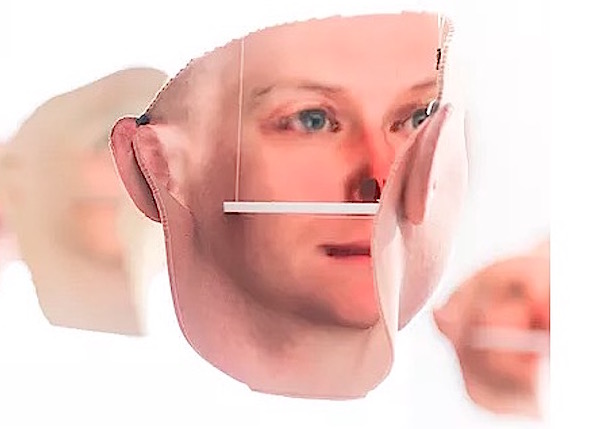A Becoming Resemblance is an exhibition by Heather Dewey-Hagborg and Chelsea E. Manning, investigating emerging technologies of genomic identity construction and our societal moment.
“Prisons try very hard to make us inhuman and unreal by denying our image, and thus our existence, to the rest of the world” – Chelsea E Manning
In 2015, Heather began to produce 3D printed portraits derived from the DNA extracted from cheek swabs and hair clippings Chelsea mailed out of prison. Incarcerated since her gender transition and subject to a strict policy on visitation, Chelsea’s image was suppressed from 2013 until her release from prison in May this year. The artistic collaboration with Heather gave Chelsea back a form of visibility, a human face she had been denied.

As Chelsea described the collaboration: “Prisons try very hard to make us inhuman and unreal by denying our image, and thus our existence, to the rest of the world. Imagery has become a kind of proof of existence. The use of DNA in art provides a cutting edge and a very post-modern—almost ‘post-post-modern’—analysis of thought, identity, and expression. It combines chemistry, biology, information, and our ideas of beauty and identity.”
In 2016, with Obama’s presidency coming to a close, Heather and Chelsea teamed up with illustrator Shoili Kanungo to produce Suppressed Images, a graphic short story narrating their collaboration and envisioning a future in which Obama commutes Chelsea’s sentence. The comic book ends with Chelsea visiting an exhibition of her portraits. The first part of the forecast came true just several hours after the comic had been published: Obama commuted Chelsea’s prison sentence and she has now been released. The present exhibition is the realization of the second part of the forecast: for the first time, Chelsea will be able to view the portraits produced from her DNA in person.
The centrepiece of the exhibition, suspended at eye-level in the middle of the gallery, is a series of 30 3D printed portraits of possible Chelseas, forming a diverse crowd and evoking the form of a mass movement standing with her. The installation Probably Chelsea illustrates a multitude of ways in which DNA can be interpreted. It is a refutation of outmoded notions of biologically inscribed identity and a testament to the commonality of all, a commonality that is clearly present even at the cellular level.
Heather Dewey-Hagborg is an interdisciplinary artist and educator. Her controversial biopolitical art practice includes the project Stranger Visions (2012) in which she created portrait sculptures from analyses of genetic material (hair, cigarette butts, chewed-up gum) collected in public places. Dewey-Hagborg has shown work internationally, including at the World Economic Forum, Shenzhen Urbanism and Architecture Biennale, the New Museum, the Centre Pompidou and MoMA PS1. Her work has been widely discussed in the media, from the New York Times and the BBC to TED and Wired. She is an Assistant Professor of Art and Technology Studies at the School of the Art Institute of Chicago and a 2016 Creative Capital award grantee. She is also an artist and resident at Data & Society.
Heather Dewey-Hagborg & Chelsea Manning A Becoming Resemblance Curated by Roddy Schrock August 2 – September 5, 2017 FRIDMAN GALLERY NY

